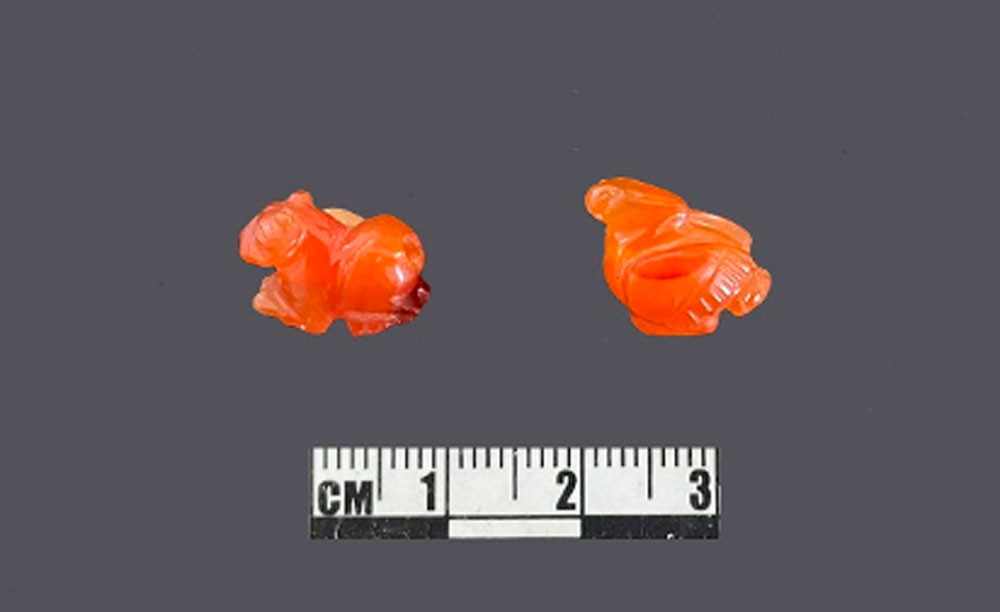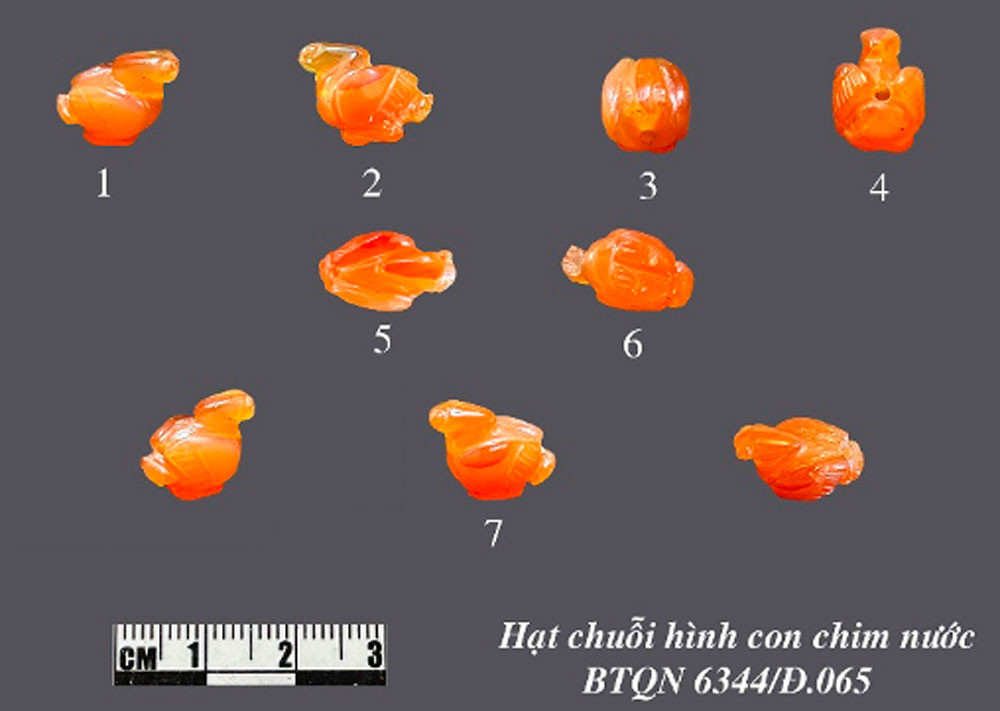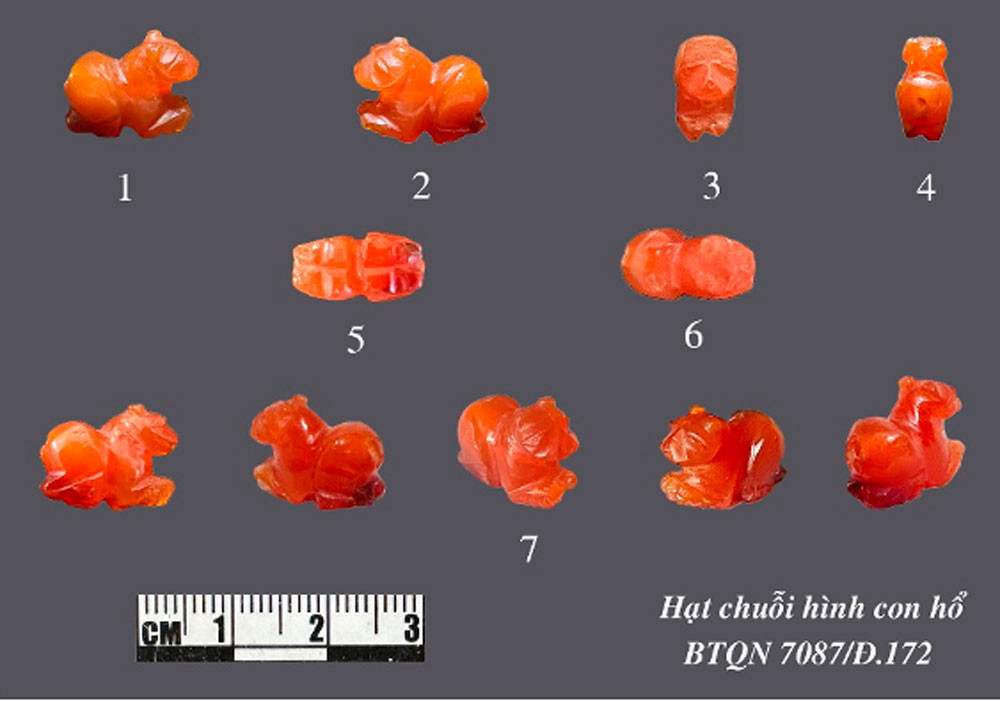These artifacts, made from carnelian - a semi-precious gemstone with a history spanning millennia - are unique to the Sa Huynh culture.
Carnelian has long been treasured, first appearing in the Varna Chalcolithic necropolis in Bulgaria approximately 6,500 years ago.
It was highly valued in ancient Greek and Roman societies over 4,000 years ago and has since been unearthed in archaeological sites across the Balkans, Greece, the Middle East, and other ancient regions.
Craftsmanship and cultural significance
The exceptional craftsmanship of these beads reflects the artisans’ patience and skill. Their refined designs highlight the advanced techniques and artistry of Sa Huynh culture.
These rare historical artifacts provide insight into the cultural exchanges of the Sa Huynh civilization, revealing its prominent role in maritime trade across the East Sea.
The residents of Sa Huynh were skilled traders, affluent consumers, and pivotal players in ancient economic networks.
Lai Nghi, located in a strategic estuarine and coastal area, was a key hub in the Sa Huynh cultural system. Its central position facilitated trade and cultural exchange with other regions, underscoring its historical importance.
Tinh Le


